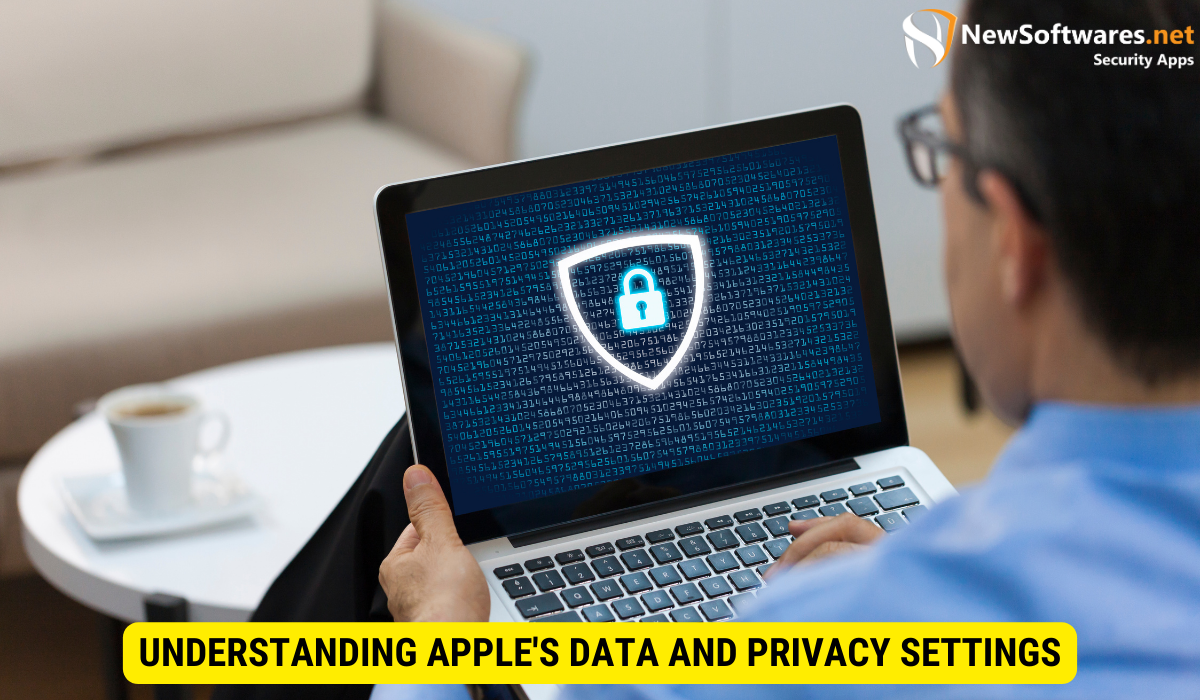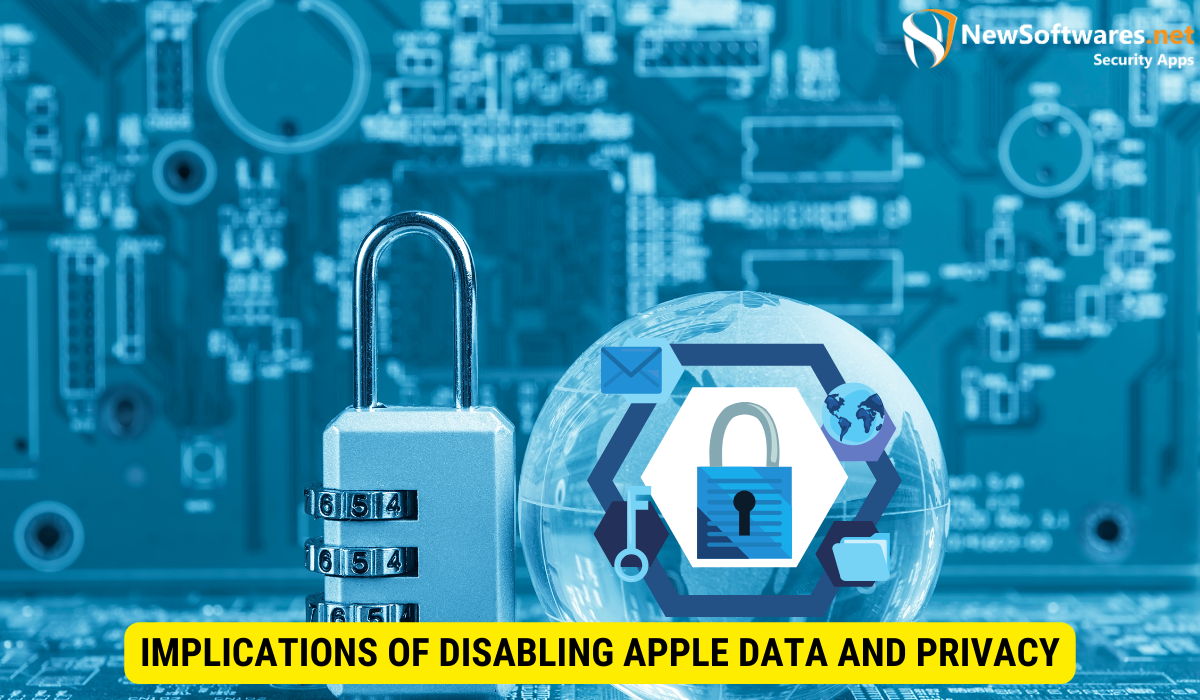Disabling certain Apple data and privacy settings can enhance user privacy, but it cannot entirely prevent data collection. These settings allow users to control what data is shared and how it’s used, impacting functionality and user experience.
In this digital age, where our personal information is constantly being collected and analyzed, concerns about data privacy have become increasingly important. Apple, being one of the leading technology companies, understands the significance of protecting user data. They have implemented various data and privacy settings on their devices to give users control over how their information is collected and used. But can you disable Apple data and privacy entirely? Together, we will delve into the understanding of Apple’s data and privacy settings, steps to disable them if desired, the implications of doing so, and answer some frequently asked questions. So let’s get started!
Understanding Apple’s Data and Privacy Settings

The Importance of Data and Privacy
Before we dive into the details of disabling Apple’s data and privacy settings, let’s first understand why data and privacy matter. In today’s interconnected world, our personal data holds significant value. It includes sensitive information such as our names, addresses, contacts, photos, and even our browsing habits. Protecting this data is crucial to prevent misuse, identity theft, and unauthorized access. By empowering users to control their data, Apple aims to prioritize user privacy and security.
Now, let’s explore further why data and privacy are of utmost importance. In the digital age, our lives have become intertwined with technology. We rely on our smartphones, tablets, and computers for various tasks, from communication to entertainment, from work to leisure. With the increasing reliance on technology, the amount of personal data we generate and share has also multiplied.
Imagine a scenario where your personal data falls into the wrong hands. Your identity could be stolen, leading to financial loss and emotional distress. Your private conversations and photos could be exposed, violating your sense of privacy. Your browsing habits could be tracked and used to manipulate your decisions. These are just a few examples of the potential risks associated with data breaches and privacy infringements.
By acknowledging the importance of data and privacy, Apple takes a proactive stance in protecting its users. They understand that privacy is a fundamental human right and strive to create products and services that respect and uphold this right.
How Apple Handles Your Data
Apple’s approach to handling user data stands out from other tech giants. They prioritize user privacy by adopting a privacy-by-design approach. This means that the design and development of their products and services take into account privacy concerns from the very beginning. By default, Apple collects only the minimum amount of data necessary to provide their services. They use encryption and other advanced security measures to safeguard user data from unauthorized access. Additionally, Apple does not sell user information to third parties for targeted advertising.
Let’s delve deeper into how Apple’s privacy-by-design approach works. When you use an Apple device or service, such as an iPhone or iCloud, Apple ensures that your data is protected at every step. From the moment you set up your device, Apple provides you with options to customize your privacy settings. These settings allow you to control which apps have access to your personal information, such as your location, contacts, and photos.
Furthermore, Apple’s commitment to privacy extends to their software and services. They employ end-to-end encryption for messaging and file storage, ensuring that only you and the intended recipients can access your conversations and files. This means that even if someone intercepts your data, they won’t be able to decipher its contents.
Apple also takes measures to minimize data collection. For example, when you use Siri, Apple’s voice assistant, your requests are processed on your device whenever possible, without being sent to Apple’s servers. This approach helps protect your privacy by reducing the amount of data that leaves your device.
In conclusion, Apple’s data and privacy settings reflect their commitment to user privacy and security. By adopting a privacy-by-design approach, minimizing data collection, and implementing robust security measures, Apple aims to empower users to control their personal information. Understanding and utilizing these settings can help you enhance your privacy and protect your data in an increasingly connected world.
Steps to Disable Apple Data and Privacy
Accessing Your Apple Account Settings
The first step in disabling Apple’s data and privacy settings is to access your Apple account settings. Open the “Settings” app on your Apple device and tap on your Apple ID at the top of the screen. This will take you to your Apple account settings menu.
Once you’re in the Apple account settings menu, you’ll find a wealth of options and features to explore. From here, you can manage not only your data and privacy settings but also your payment information, family sharing, iCloud storage, and more. Take some time to familiarize yourself with all the available options and customize your Apple experience to your liking.
Navigating to the Privacy Section
Once you’ve explored the various settings in your Apple account, it’s time to navigate to the Privacy section. This is where you can find and manage the specific data and privacy settings you want to disable.
Tap on the “Privacy” option, which is usually located towards the top of the Apple account settings menu. As you enter the Privacy section, you’ll notice that Apple provides a comprehensive list of privacy settings that you can customize according to your preferences.
It’s worth mentioning that Apple takes privacy seriously and provides users with extensive control over their data. This commitment to privacy is one of the reasons why many people choose Apple devices and services.
Disabling Specific Data and Privacy Settings
Within the privacy settings screen, you’ll find a range of options that allow you to disable specific data and privacy settings based on your requirements. Apple offers granular control over various aspects such as location services, analytics, advertising, and more.
For example, if you don’t want Apple to collect your location data, simply toggle off the “Location Services” setting. This will prevent apps and services from accessing your location information. Similarly, if you prefer not to receive personalized ads, you can disable the “Personalized Ads” setting.
It’s important to note that while disabling certain data and privacy settings may enhance your privacy, it can also impact the functionality of certain apps and features. For example, if you disable location services, some navigation apps may not be able to provide accurate directions. Therefore, it’s essential to consider the implications of each setting before making any changes.
By taking the time to review and customize your data and privacy settings, you can ensure that your Apple device and services align with your privacy preferences. Remember that Apple regularly updates its privacy features, so it’s a good idea to revisit these settings periodically to stay up to date with the latest options and enhancements.
Implications of Disabling Apple Data and Privacy

Potential Risks and Benefits
Disabling Apple’s data and privacy settings comes with both risks and benefits. On one hand, disabling certain settings may enhance your privacy by preventing the collection of specific data. This can minimize the information available to third parties. On the other hand, disabling certain settings may limit the functionality or personalized experiences that Apple products and services can offer. For example, disabling location services might affect the accuracy of certain features like Maps and weather apps.
Impact on User Experience
Disabling Apple’s data and privacy settings may have an impact on your user experience. For instance, personalized recommendations, targeted ads, and some app features may be less effective or unavailable when certain data permissions are disabled. However, if you prioritize privacy over personalized experiences, disabling these settings might be a trade-off worth considering.
Maintaining Your Privacy Beyond Apple’s Settings
Additional Measures to Protect Your Privacy
While disabling Apple’s data and privacy settings provides control over your data within the Apple ecosystem, there are additional measures you can take to protect your privacy elsewhere. These include using strong and unique passwords, enabling two-factor authentication, keeping your software up to date, and being cautious about the apps and services you use.
Understanding Your Digital Footprint
It’s crucial to be aware of the digital footprint we leave behind. Our online activities, social media presence, and the information we share can all contribute to our digital footprint. Taking an active role in understanding and managing your digital footprint can further enhance your privacy and security.
Key Takeaways
- Apple prioritizes user privacy and provides extensive control over data and privacy settings on their devices.
- Disabling Apple’s data and privacy settings can enhance privacy but may affect functionality and personalized experiences.
- Apple’s data and privacy settings can be accessed and customized through your Apple account settings.
- Additional measures beyond Apple’s settings can be taken to protect your privacy, such as using strong passwords and being cautious with online activities.
In summary, while Apple provides significant control over data and privacy settings, completely disabling data collection is not an option. Users can customize their preferences to balance privacy and functionality. By understanding Apple’s data and privacy practices and taking additional measures, we can better protect our digital footprint and take control of our personal information.
